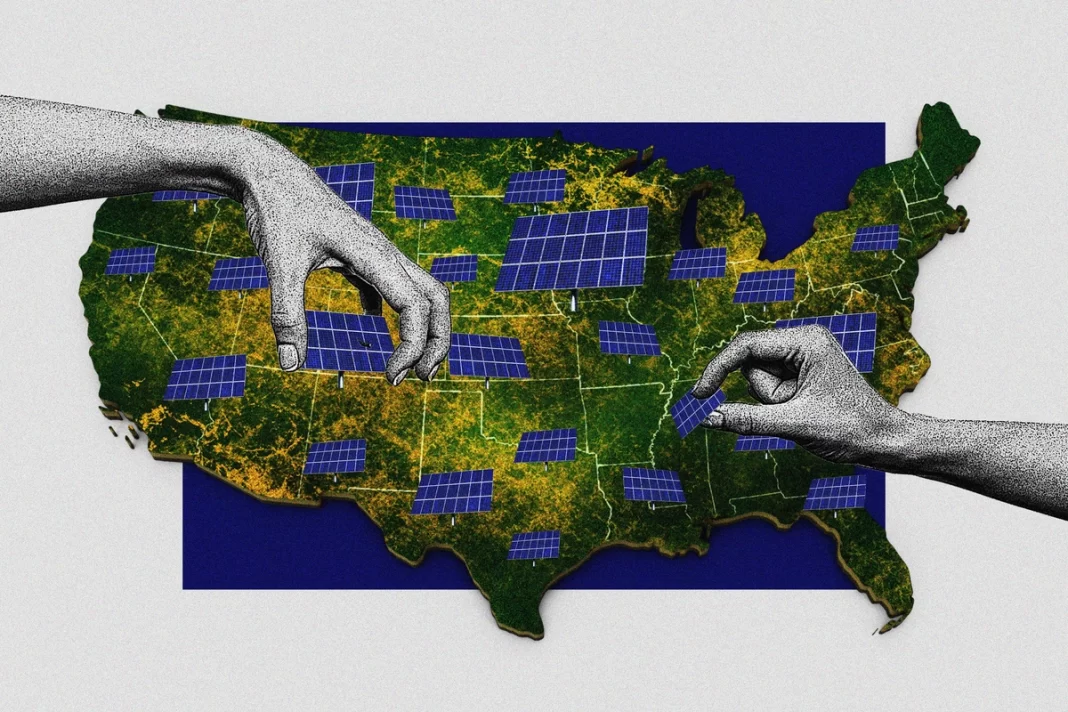‘Our public lands are playing a critical role in the clean energy transition,’ said Laura Daniel-Davis, acting deputy secretary of the Interior Department.
Solar energy’s appetite for vast amounts of land has prompted the Biden administration to propose designating as much as 55 million acres of public lands as potential sites for industrial-scale solar farms.
That’s an area larger than 36 states and similar in size to Idaho or Minnesota.
An updated initiative by the Bureau of Land Management (BLM), called the Western Solar Plan, proposes six alternatives for solar development.
In the most aggressive of these scenarios, 55 million acres across 11 Western states would be made available for solar energy. The least aggressive alternative would designate 8 million acres for that purpose.
The BLM’s “preferred alternative” falls halfway between the two, setting aside 22 million acres for solar development.
In total, the BLM manages 162 million acres of public land designated as “multi-use.” These multiple uses include farming, ranching, hunting and fishing, hiking and camping, drilling, and mining—and more recently, wind and solar installations and transmission lines to connect them to the grid.
The BLM, a division of the Department of the Interior, states that, in order to carry out the Biden administration’s goal of generating 25 gigawatts (GW) of electricity from wind and solar on public lands by 2025—and generating 100 percent “renewable” electricity by 2035—solar panels would need to be sited on 700,000 acres of public land.
More than 3 million solar panels are required to produce 1 GW of electricity, according to the Department of Energy. One GW can power 500,000 to 750,000 homes on average, assuming a constant supply of energy generation and use.
“The Interior Department’s work … is crucial to achieving the Biden–Harris administration’s goal of a carbon pollution-free power sector by 2035,” Laura Daniel-Davis, acting deputy secretary of the Interior, said in a Jan. 17 statement.
“And this updated solar roadmap will help us get there in more states and on more lands across the West,” she said.
“Our public lands are playing a critical role in the clean energy transition.”







